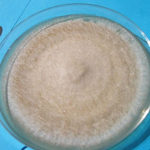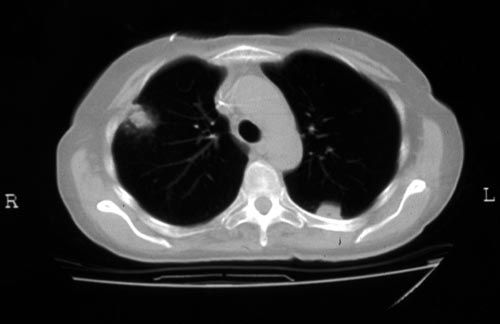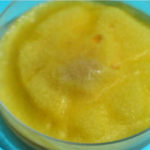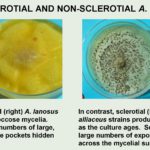Date: 26 November 2013
Halo sign in IPA
Copyright: n/a
Notes:
CT scan of a neutropenia patient with leukaemia who has 2 lesions. One, on the right, is nodular, abuts on the pleura and is surrounded by a (grey) low attenuation area, referred to as the “halo” sign. This is virtually only seen in invasive fungal infections of the lung, especially early in the course of the disease, during neutropenia. The other lesion visible on this scan, posteriorly on the left, is also typical of invasive pulmonary aspergillosis in that it is pleura-based and has sharply angulated sides typical of vascular invasion and infarction of small lung segments. There is the suggestion of a “halo” sign anteriorly, but there is less confidence in this appearance (compared with the other) because it is only on one side of the lesion.
Images library
-
Title
Legend
-
Conidiophores of all the isolates examined were branched (arrow, left panel), consistent with the species description by Kamal and Bhargava.
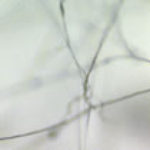
-
Sclerotial strains produce bright yellow, floccose mycelia. Sclerotial strains produce small numbers of large, fused sclerotial bodies in discrete pockets hidden within the mycelium.
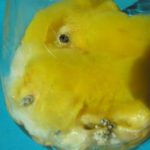
-
Aspergillus alliaceus. No branching was observed in A. alliaceus conidiophores. Sclerotial strains typically produce large numbers of exposed, uniformly-shaped sclerotia across the mycelial surface.

-
Aspergillus alliaceus – Sclerotial. A. alliaceus strains produce flat, pale mycelia that darken as the culture ages.Sclerotial strains typically produce large numbers of exposed, uniformly-shaped sclerotia across the mycelial surface.

-
A. alliaceus strains produce flat, pale mycelia that darken as the culture ages.Sclerotial strains typically produce large numbers of exposed, uniformly-shaped sclerotia across the mycelial surface.
